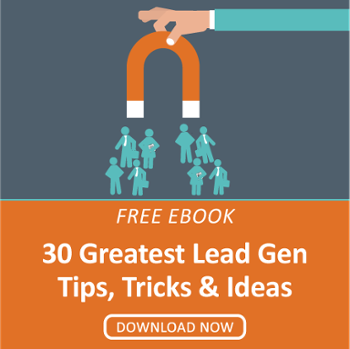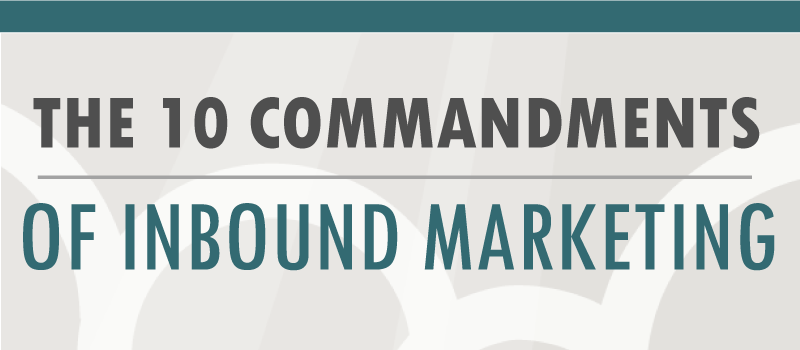5 Reasons We're Thankful for Our Clients
I could probably write a blog post on a thousand reasons we love our clients, but I wanted to be a bit more succinct here and share some of the key...
6 min read
 Dean Moothart
:
February 2, 2022
Dean Moothart
:
February 2, 2022


Did you know that increasing your retention by just 5% could potentially increase your revenue by 25-95%? By improving client acquisition and retention, your agency can save part of the $136.8 billion lost per year from U.S. consumers switching brands.
This is where attracting clients and maintaining long-term relationships becomes important to your bottom line. And you'll need a solid marketing agency growth strategy, quality client experiences, and efficient marketing tactics to do it successfully.
As a marketing agency yourself, it’s important to understand how to do this for lasting growth. Whether you're struggling to attract more clients, retain them — or both — it's essential to know strategies to streamline efforts and improve client acquisition rates.
Here are the 10 steps you must take to reach your client relationship goals, beginning with finding and retaining new clients.
 1. Go Niche
1. Go NicheYour agency might not have the resources or expertise to be a good fit for all industries — and that's okay. It's not only possible to niche down and specialize, but it's beneficial. You can do this by assessing your resources and narrowing them down to attract only the most compatible clients. After all, it's easier to form better client relationships when you have specific offerings.
Focus on specialized services tailored to the distinguished business needs of the individual industries you want to work with. Think about the long game — finding and keeping the right clients means paring down your audience. Remember, you don’t have to be everything to everyone. When you narrow down your niche, you’ll find smaller viable markets to go after, which will attract and maintain loyal customers.
A significant benefit of niching down your agency is it will allow you to only work with businesses who need your unique expertise, giving you a competitive edge over more general agencies. Additional benefits include better targeting, highlighting your greatest strengths, and getting known for your specialty in marketing. You can also leverage client success stories to accelerate credibility/trust-building in the sales process with prospects who have similar characteristics.
Know precisely what target market your agency is after so you can adequately reach and resonate with them. The better you know your audience, the better positioned you will be to resolve their pain points in a way that the competition cannot. This is especially true for general marketing agencies that try to address too many problems rather than specializing in a few.
To better understand your target market, you'll need to:
Create target personas — cater to these, add value directly to them
Conduct market research — dissect the target market into sections
Gain clarity on your services — narrow down your agency's specialty services, making sure they align with the target audience you intend to appeal to
Identify their pain points — know what problems your audience has so you can be the best at resolving them.
Consider their buyers’ journey — understanding where customers are in their decision-making process helps you to reach and resonate with them at each stage.
Nearly two-thirds of consumers say they want brands to connect with them on multiple marketing channels. Content, in particular, gives you a unique opportunity to establish expertise and add value to their life while strategically placing yourself at the forefront of their minds as they consider their options.
What's more, attracting clients with communication can be done in your marketing through social media, blogging, and email marketing.
These channels should provide massive value to the reader, educate them on relevant topics, and solve pain points. You will also want to make clients feel heard and valued, so they develop loyalty.
Then, you can keep them coming back for more by:
Offering premium content that addresses their questions and needs.
Gating your content to bring them one step closer to connecting/contact with your agency.
Map CTAs in your premium content to the various stages of the buyer's journey (TOFU, MOFU & BOFU) so no matter where in the journey your prospect finds themselves, they find resources that are relevant and helpful.
Building a website that is clear, concise, optimized, easy to navigate, and build for lead generation. Your website should have multiple ways to engage and interact with prospects and technical functionality (i.e., HubSpot) to identify qualified leads via landing pages and lead capture forms.
You must have a strong online presence to gain new clients. In fact, being visible online — via a website, digital marketing, social media, blogging — is essential. According to Forbes, 91% of online adults use search engines to find information online, and 65% see online search as the most trusted source of information about people and companies.
A website, especially, acts as one of your most important online presences. When done correctly, it can not only bring your brand more trust and credibility but can increase lead generation when optimized for SEO. Search Engine Land reports that most (68%) website traffic is from paid and organic search. Together, social media can drive 5-10% of website traffic, and companies that blog drive 55% more traffic than those who don't.
They all work together to attract clients to your agency, with your website at the center of it all. A website built for lead generation should look like the following:
Easy to navigate
Educational content
All your contact information must be updated and easy to find
Employee highlights and any awards, achievements, etc. (allows clients to connect with the people behind the work, not just the brand)
Form fills for prospective customers
Quality content with links to explore
Strong calls-to-action for all stages of the buyer's journey
Develop a partnership with other (non-competing) businesses with a similar audience to you. A partnership with a complimentary agency (you may have the same audience, but you don't offer the same thing, can be beneficial for many reasons, including:
Creating new connections
Bringing in more clients
Accessing more opportunities
Can share resources on target audiences
For instance, a digital marketing agency might do well to partner with a social media agency or PR firm, depending on the agency’s strengths and weaknesses. These partnerships can include features on guest blogs (linking to each other to improve SEO) or even partnering on webinars to reach each other's audiences. You should also try to leverage resource and communication channels offered by industry association groups of your target segments (i.e. NAPEO, Radio Broadcasters Assoc).
When done correctly, client acquisition rates can be improved significantly with inbound marketing. According to Invesp, inbound practices produce 54% more leads than traditional marketing practices and often double the average site conversion rate from 6% to 12%.
If that isn't incredible enough, at least 41% of marketers have also confirmed that inbound marketing produces a measurable ROI. Additional studies report that the average cost per lead drops 80% after five months when executed consistently.
Other benefits of inbound include:
Increases trust and credibility
Drives more traffic and sales
Establishes authority in the industry as a thought leader
Converts website visitors into leads
Appeals to different buyer journey stages (nurtures leads)
Sales enablement equips sales teams with resources, training, and data to sell more effectively
Attracts more leads to your company
These benefits are particularly maximized when outsourcing to an inbound company if your agency is not equipped or experienced enough to apply inbound principles. For instance, LeadG2 specializes in building online presences, establishing thought leadership, and generating sales-qualified leads for agencies.
You must be able to see when another service of yours will add more value to a client's experience. This begins with understanding your client's needs entirely so that you can discuss appropriate solutions and new opportunities.
Up-selling and cross-selling don't just show your customers that you care enough to understand their needs. It introduces them to solutions they didn't know existed or may not have even known they needed. This is why upselling often increases revenue by 10-30% and cross-selling increases sales by 20% and profits by 30%.
Try to be nimble about pivoting strategies to solve problems and help them evolve!
First and foremost, tracking and reporting ROI is important for transparency. Show your clients what you are doing for them periodically, and be sure to help them understand the progress you have made. This way, they are regularly up-to-date on what your agency is doing for them, as well as the reason behind your insight for future endeavors.
This is also a great time to show them what can improve, including potential plans for improvement. When discussing areas that didn't perform as well as expected, these suggestions will leave your clients confident that you will continue to improve their marketing efforts. It all comes down to clients needing to know if these efforts strengthen their bottom line.
It’s important to position yourself as a marketing agency that is actively focused on reporting and improving ROI. After all, your clients are heavily invested in their bottom lines. Marketing materials like case studies are a good tool to use to show potential clients how your agency has helped others achieve the success they are after too. Customers love to see proof of your ability to improve their businesses, so content like this can go a long way!
Clients should always feel welcome to come to you with questions, concerns, needs, etc. Allow a clear open line of communication, which includes sharing your needs and expectations. This way, you can continue to educate and lead your clients.
Marketing automation tools are essential to ensure regular and consistent communication with your clients and prospects. Communication is easier and more efficient when you automate social media, emails, ad campaigns, and more. Through this process, you can attract more leads and retain existing customers with more ease. What’s more is, you will deliver important information when it matters most while your employees have more time to tend to other tasks.
Attracting the right clients and retaining them long-term requires a lot of experience and knowledge. Your services as an agency may be phenomenal. Still, clients won't know that unless you break through the clutter, start attracting more prospects to your agency, and nurturing those long-term client relationships with expert strategies.

I could probably write a blog post on a thousand reasons we love our clients, but I wanted to be a bit more succinct here and share some of the key...

Many companies looking to implement a lead generation or inbound marketing program want to know the easiest and most cost-effective way to reach...

Applying Insights from the 2016-17 Marketing & Sales Survey of Recruiting & Staffing Firms Knowing what clients are looking for from a staffing or...